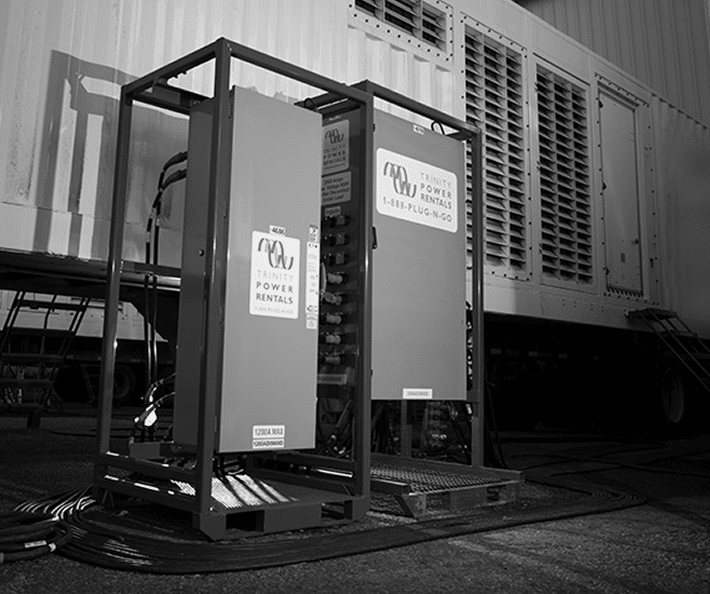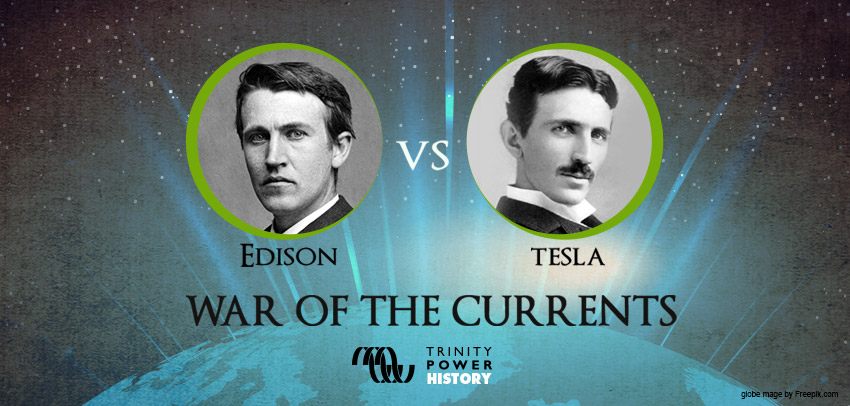- OUR APPROACH
-
COMMITTED TO YOUR SUCCESS
Our approach, developed over decades of experience, is fine-tuned to get the results you want.
We deliver concept-to-completion solutions, designed by temporary power specialists with access to the largest inventory of high-quality power generation and distribution equipment in North America.
-
- Equipment
-
RENTALS
From a wide range of diesel and natural gas generators to transformers, cable, light towers and more, our large rental fleet and extensive vendor network ensure we’ll have the temporary power equipment that your project requires — every time.

-
- Industries
-
INDUSTRIES WE SERVE
For nearly 20 years, we have been at work powering projects across Canada’s industrial sectors.
Select from this sampling of industries to learn how we can put our expertise to work for you.
VIEW ALL- Projects
- About
-
A PROUD HISTORY. A BRIGHT FUTURE.
From our inception in 1998, we have been building our team on a foundation of excellence. Our team members’ passion, expertise and commitment are what have allowed us to grow into a national company with projects across Canada.
Click on the links to learn more about our history, our team or our career opportunities.
- Blog
- Contact
-
This summer, the Electric Markets Research Foundation made waves when it released a study predicting that distributed power generation could significantly disrupt utilities. But are the times really a-changing for utilities?
The Distributed Debate
Distributed, or decentralized power generation -where an individual, business or community generates their own power, rather than relying on the grid- isn’t a new idea. But as renewable energy, much of which is decentralized, gains traction, the conversation has started in earnest about distributed generation and the role it will play in the future of the energy industry.
There is still a heated debate surrounding just how much of a dent distributed generation such as solar and wind will put in our grid energy consumption, with some pointing out that it still represents a small fraction of overall energy use, even in places like Germany, where a decade of subsidies and programs have strongly incentivized solar energy.
However, solar technology is becoming cheaper and more efficient, small-scale energy storage systems like Tesla’s Powerwall are developing rapidly, and many nations, including Canada, are looking for ways to meet their carbon emissions reduction targets. Given these key factors, distributed generation could pose a real threat of disruption to large-scale, centralized utilities.
Making Inroads Into Canada
In fact, distributed generation is already a reality. On top of Germany, places like Denmark leading the way and California are leading the way in the move towards renewable, often decentralized energy.
In Canada, far fewer distributed projects exist. However, a number of private and public sector initiatives have emerged, including: Kimberly’s SunMine, a large solar project built on a reclaimed Teck mine site; Trinity Power’s own work with ATCO, a project that uses the natural gas byproduct of an oil field project to generate electricity rather than flaring it off; and Ontario’s Green Energy Act, which has encouraged the growth of renewable and distributed energy in that province.
A Changing Energy Landscape
Dean Sutton is the founder of NRG21 and Energy Ventures Canada, a new organization seeking to unite and advance the renewable energy sector through innovation, finance and project development. He acknowledges the challenges that utilities face when it comes to working with distributed generation. “They want everyone to remain a paying customer,” he explains. “They don’t want to dwindle their business, they want to grow it.” Furthermore, distributed generation will not eliminate the need for grids, leaving utilities with the responsibility for their upkeep. As Sutton explains, “Even when their revenues drop from people generating their own energy (while relying on grid for backup), the utilities still bear the responsibility of maintaining and even improving the old, antiquated grid.”
Despite these concerns, Sutton echoes the sentiments of others in the field when he says that utilities will have no choice but to adapt to the changing landscape of energy production. “Energy demand is increasing, the mandate to remove fossil-based fuels is already there,” says Sutton, citing Alberta’s coal-fired power phaseout as an example. “Those old coal-fired gas plants are going offline and they need to be replaced with something.”
And that something is likely to include distributed generation. In fact, according to Sutton, Alberta is currently looking at Ontario’s rocky transition to decentralized and renewable power for insight as it examines its own energy program.
Business Models in Transition
In the face of rapidly evolving policies and technology, how should utilities respond? In short, they will need to rethink the way they do business.
According to a report by management consulting firm Bain and Company, “Growth of DE [distributed energy] will force change on utilities’ business models.” The report further explains, “Utility executives will need to understand the value chain of distributed energy and related business opportunities. They may need to develop or acquire new capabilities, as well as secure regulatory support, as they move from a focus on centralized generation to models that rely on more customer interaction, commercial and energy services, and information management.” It goes on to list potential opportunities for utilities in the areas of distributed energy supply, demand management, and the control of the distributed energy network.
Sutton adds, “What’s needed is the ability for smaller and medium-sized distributed, decentralized projects to be able to go and tie into the utility. [Utilities] need to create programs that make it easy for someone to say, I want to invest in and control my electricity.” While programs like BC Hydro’s Independent Power Producer (IPP) initiative exist, Sutton says that they are very hard to navigate. Because of this, along with the already-low cost of energy in BC, he says, “a very small percentage [of IPP projects] will ever make it to light.”
“The Whole World is Decentralized”
As utilities encounter technologies and policies that require them to change the way they operate, Sutton acknowledges that the transition could be difficult. But he believes that it’s possible for utilities to assume a successful role alongside distributed generation. More than that, he believes that eventually, utilities won’t have a choice. “The whole world is decentralized,” says Sutton, citing examples such as Uber and AirBnB in other industries. It might only be a matter of time before Canadian energy is as well.
Related Articles
Subscribe for Access to Exclusive Content
Get insider updates, industry news, special equipment offers, and expert tips—directly to your inbox.
"*" indicates required fields





















